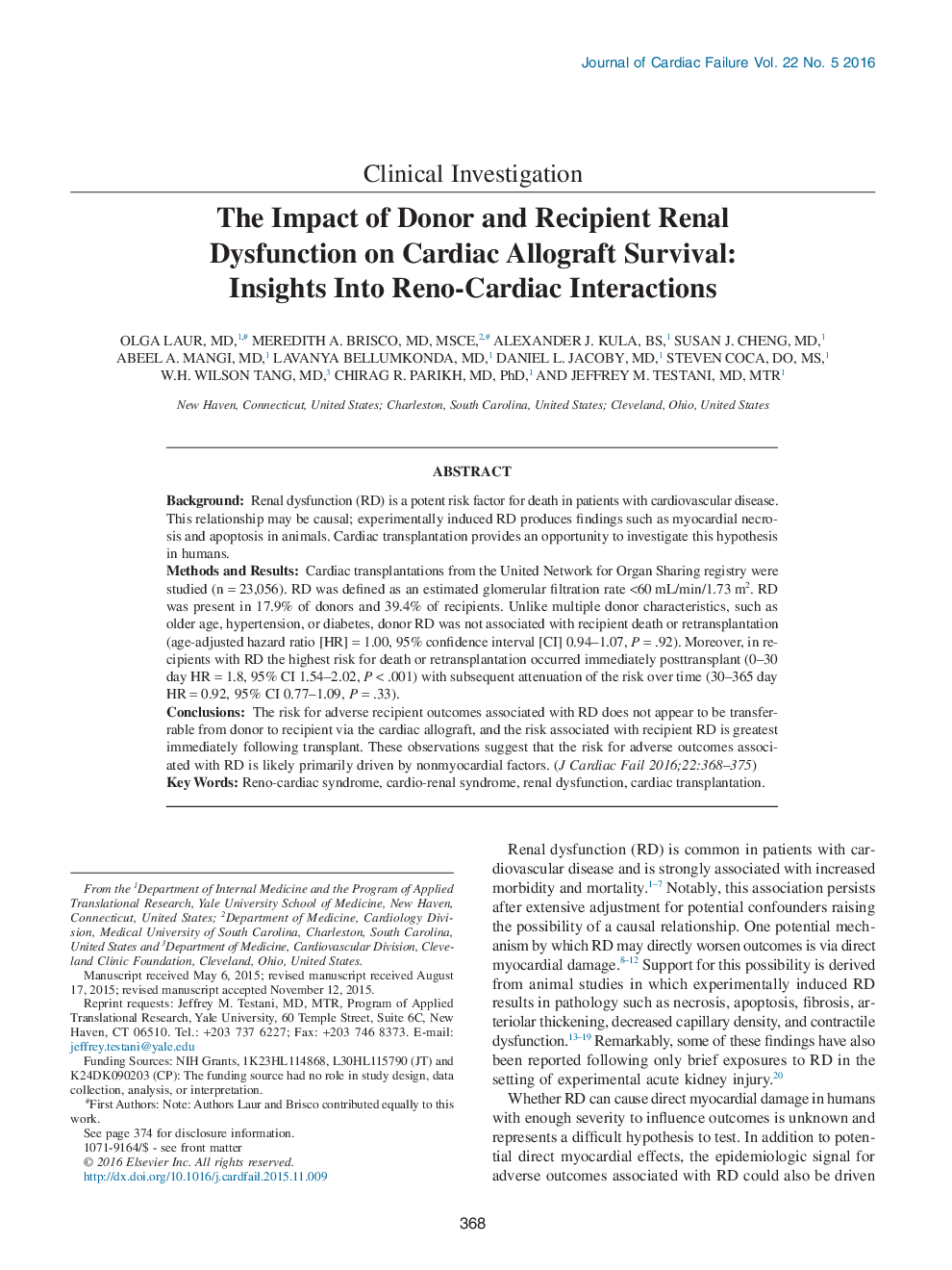| کد مقاله | کد نشریه | سال انتشار | مقاله انگلیسی | نسخه تمام متن |
|---|---|---|---|---|
| 2958420 | 1178287 | 2016 | 8 صفحه PDF | دانلود رایگان |
• The relationship between both donor renal dysfunction and recipient renal dysfunction and the composite outcome of death or retransplantation was examined in 23,056 patients in the United Network for Organ Sharing database.
• Renal dysfunction (defined as an estimated glomerular filtration rate <60 mL/min/1.73 m2) was present in 17.9% of donors and 39.4% of cardiac transplant recipients.
• Donor renal dysfunction was not significantly associated with recipient death or retransplantation.
• Recipient renal dysfunction was significantly associated with an increased risk of recipient death or retransplantation, a risk that appeared to be greatest in the first 30 days posttransplant.
BackgroundRenal dysfunction (RD) is a potent risk factor for death in patients with cardiovascular disease. This relationship may be causal; experimentally induced RD produces findings such as myocardial necrosis and apoptosis in animals. Cardiac transplantation provides an opportunity to investigate this hypothesis in humans.Methods and ResultsCardiac transplantations from the United Network for Organ Sharing registry were studied (n = 23,056). RD was defined as an estimated glomerular filtration rate <60 mL/min/1.73 m2. RD was present in 17.9% of donors and 39.4% of recipients. Unlike multiple donor characteristics, such as older age, hypertension, or diabetes, donor RD was not associated with recipient death or retransplantation (age-adjusted hazard ratio [HR] = 1.00, 95% confidence interval [CI] 0.94–1.07, P = .92). Moreover, in recipients with RD the highest risk for death or retransplantation occurred immediately posttransplant (0–30 day HR = 1.8, 95% CI 1.54–2.02, P < .001) with subsequent attenuation of the risk over time (30–365 day HR = 0.92, 95% CI 0.77–1.09, P = .33).ConclusionsThe risk for adverse recipient outcomes associated with RD does not appear to be transferrable from donor to recipient via the cardiac allograft, and the risk associated with recipient RD is greatest immediately following transplant. These observations suggest that the risk for adverse outcomes associated with RD is likely primarily driven by nonmyocardial factors.
Journal: Journal of Cardiac Failure - Volume 22, Issue 5, May 2016, Pages 368–375
